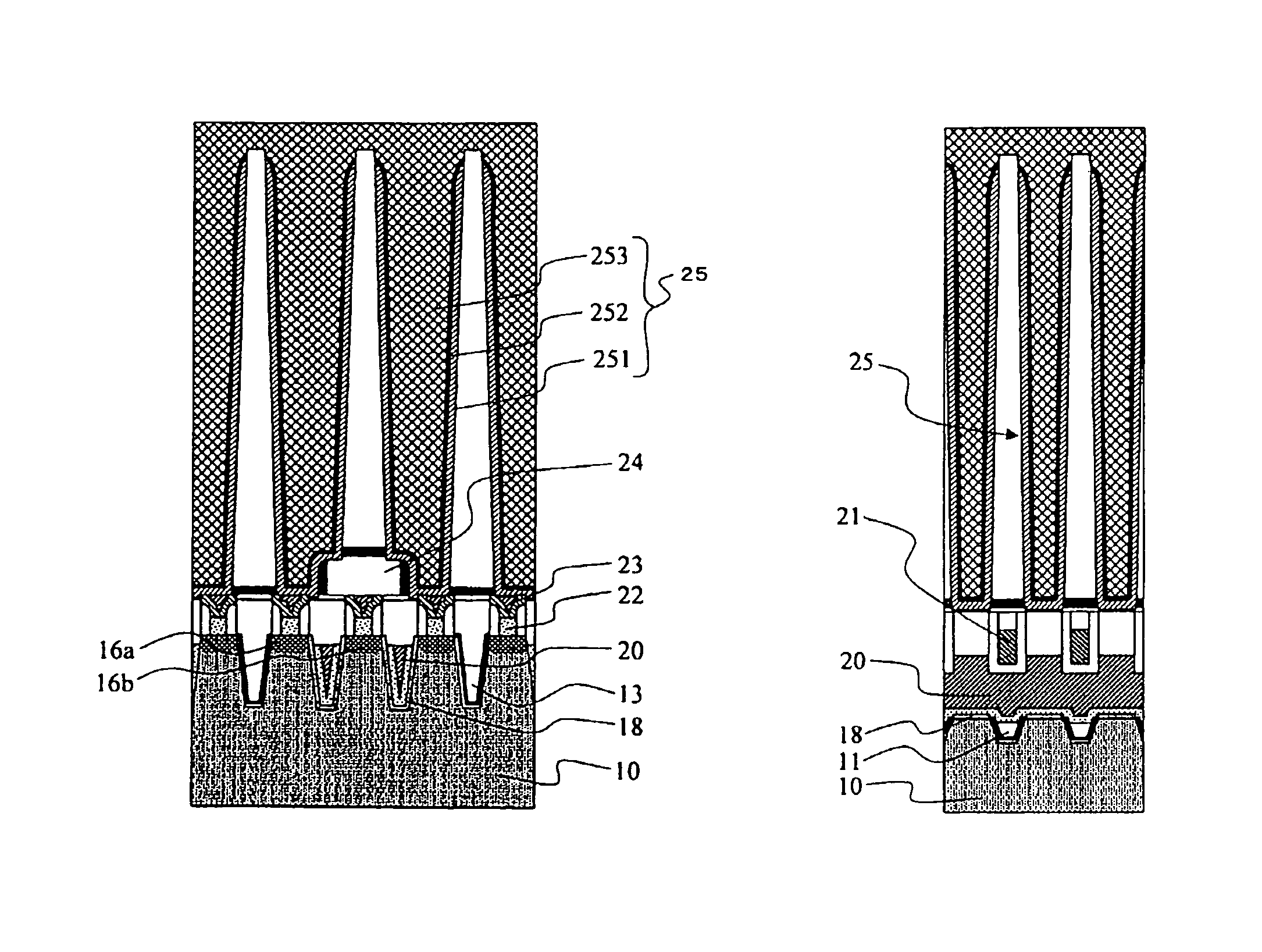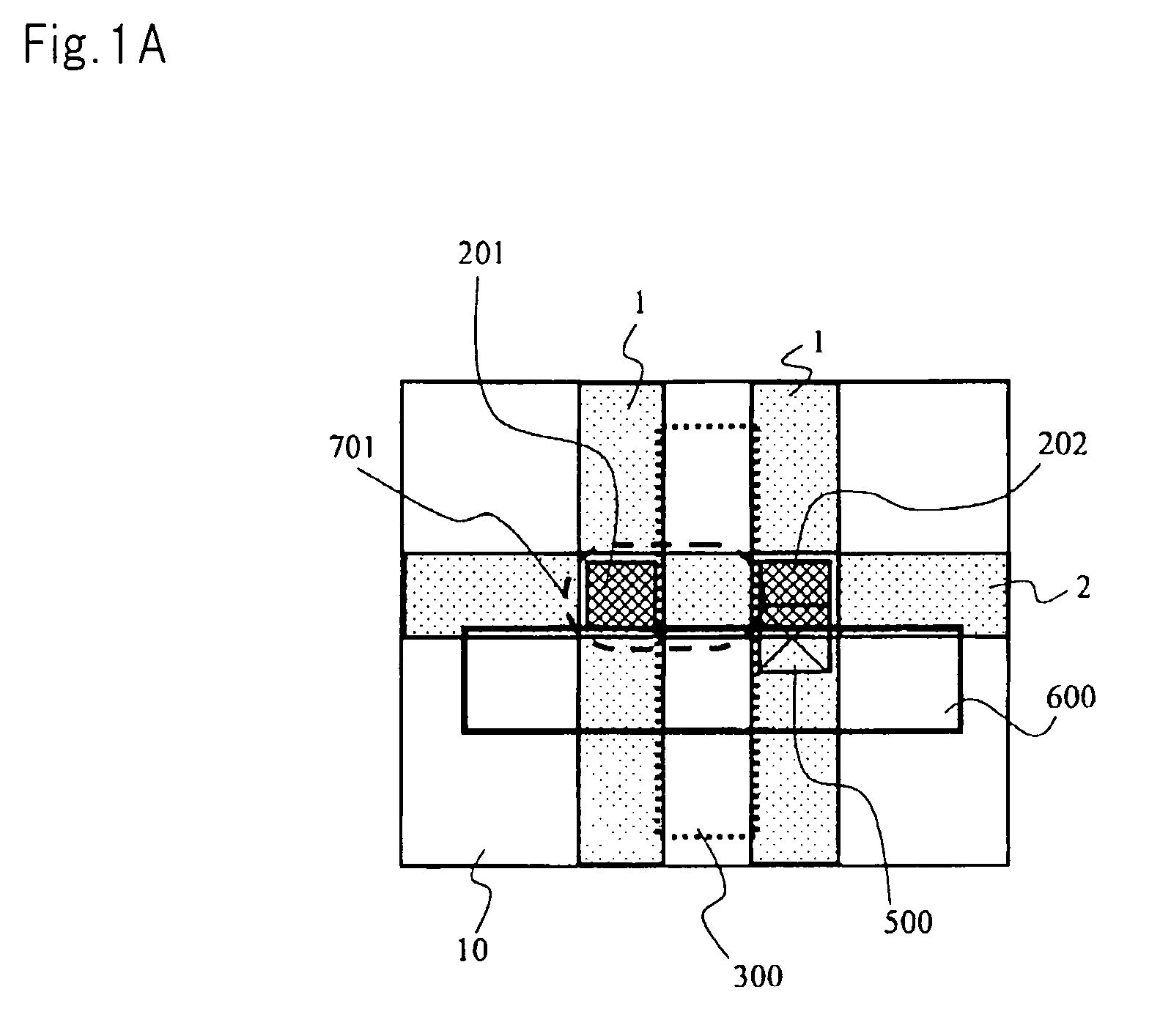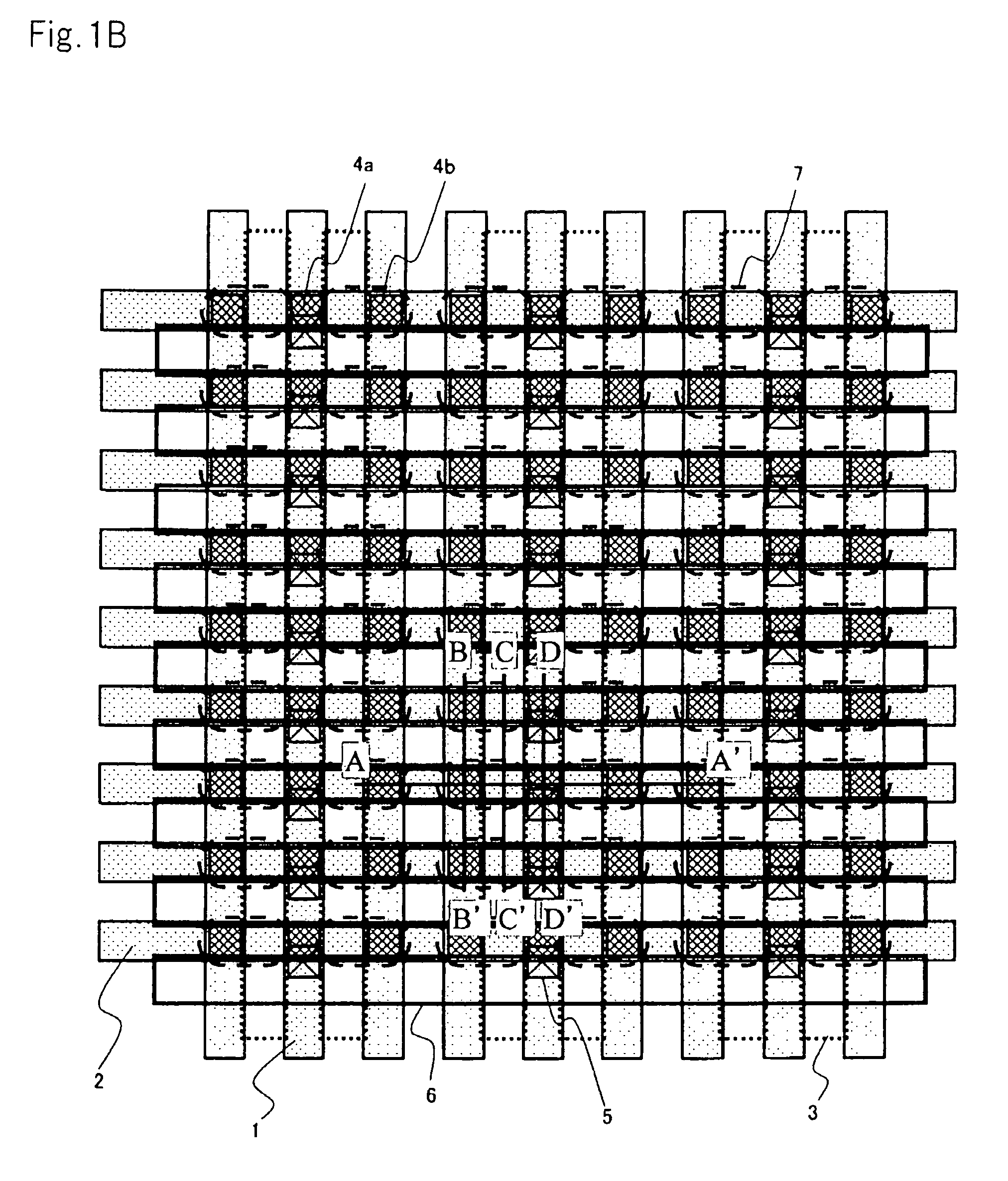Semiconductor device enabling further microfabrication
a technology of semiconductor devices and microfabrication, applied in semiconductor devices, diodes, electrical devices, etc., can solve the problems of insufficient memory cell structure, difficult to create such contact, etc., and achieve the effect of satisfying the request for further microfabrication
- Summary
- Abstract
- Description
- Claims
- Application Information
AI Technical Summary
Benefits of technology
Problems solved by technology
Method used
Image
Examples
first embodiment
[0038]The DRAM memory cell structure in accordance with the present embodiment will be described.
[0039]FIG. 1A is a plan view for explaining a memory cell pattern in accordance with the present embodiment. The memory cell of the present embodiment uses an open bit line architecture and has an area of 6F2, where F denotes a feature size which means a minimum process to be used. Moreover, the memory cell is formed on a semiconductor substrate made of silicon (hereinafter referred to as Si substrate).
[0040]The memory cell in accordance with the present embodiment is configured to have a capacitor for storing information and a MOS transistor connected to the capacitor. The MOS transistor functions as an access transistor serving to read information from the capacitor or to write information into the capacitor. Hereinafter, the MOS transistor of the memory cell is referred to as the access transistor.
[0041]As illustrated in FIG. 1A, the access transistor includes drain electrode 201 and ...
second embodiment
[0095]According to the present embodiment, the semiconductor device in accordance with the present invention is applied to a memory cell other than the DRAM.
[0096]According to the memory cell described in the first embodiment, instead of the capacitor element, a structure having a storage element using resistance change may be considered. The storage element using a change in resistance and the MOS transistor may be combined to form a memory cell such as a phase change memory (PRAM) and a resistive memory (ReRAM).
[0097]More specifically, in the case of phase change memory, the storage element, which includes a chalcogenide material (GeSbTe, etc.,) whose resistance changes with the phase change, may be formed instead of the capacitor element.
[0098]The method of manufacturing the semiconductor device in accordance with the present embodiment will be described with emphasis on only the processes that are different from the first embodiment.
[0099]In the same manner as in the first embod...
PUM
 Login to View More
Login to View More Abstract
Description
Claims
Application Information
 Login to View More
Login to View More - R&D
- Intellectual Property
- Life Sciences
- Materials
- Tech Scout
- Unparalleled Data Quality
- Higher Quality Content
- 60% Fewer Hallucinations
Browse by: Latest US Patents, China's latest patents, Technical Efficacy Thesaurus, Application Domain, Technology Topic, Popular Technical Reports.
© 2025 PatSnap. All rights reserved.Legal|Privacy policy|Modern Slavery Act Transparency Statement|Sitemap|About US| Contact US: help@patsnap.com



